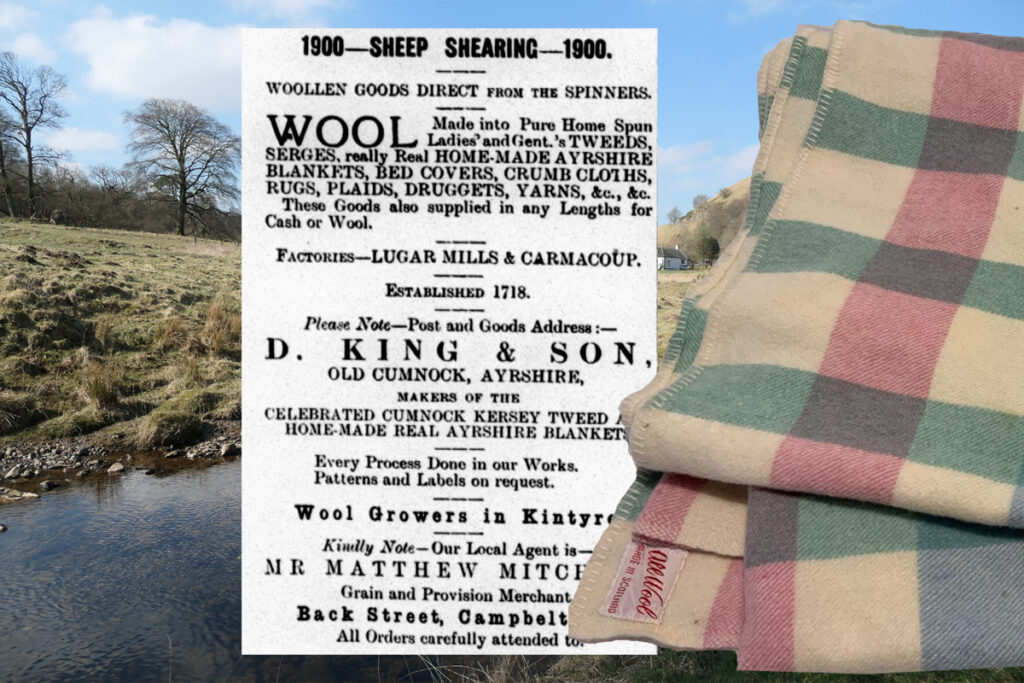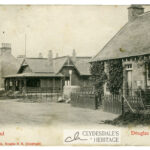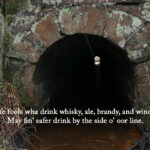The valley of the Douglas Water narrows after passing through Glespin; and the road west clings to the hillside as it winds towards the county boundary and onward to Muirkirk, Cumnock and Ayr. When navigating the bends of the A70 near Carmacoup, you may glimpse a tumbledown stone building picturesquely sited beside the burn. The landscape in this area still bears the traces of coal mining, however the ruin is a reminder of a much earlier industry, and a traditional form of trade.
At one time, most of those living in Douglas parish were involved in the spinning and weaving of wool. It was said that “in farm houses the men, on long winter nights, carded the wool and the females spun”. Textiles remained a cottage industry until about 1793 when a small-scale (and ultimately unsuccessful) cotton mill was built in Douglas. The Old Statistical Account recorded that at about the same time “another reputable company, mostly belonging to this place, have erected a small carding and spinning mill on the lands of Carmacoup”.
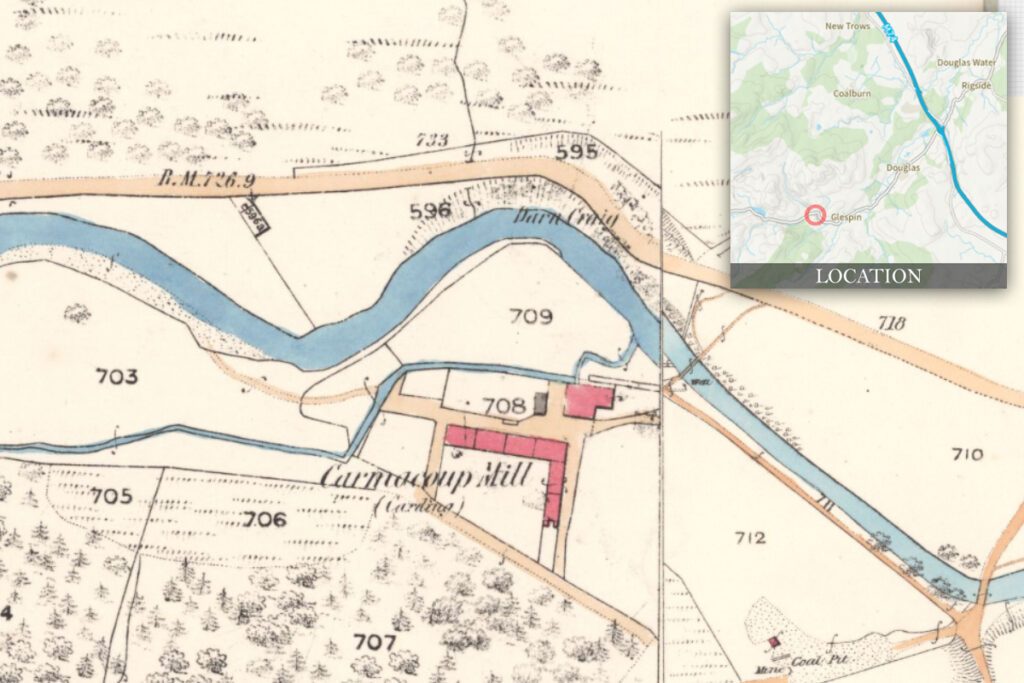
25″ OS map c.1860, courtesy National Library of Scotland
The Carmacoup carding mill was presumably set up to serve the spinners and hand loom weavers of Douglas, but seems to have met little initial success. There are references to a bankruptcy and a sale in 1804, and in 1845, the New Statistical Account recorded that the small carding mill for wool “is still kept up, but to no great advantage”. The premises were described in about 1860 as “two storeys high, slated, and in good repair; attached is a range of dwelling houses, in all 6 tenements, one storey and slated.”
Carding is the process of combing fleece in order to align the wool fibres ready for spinning into thread. This can be done by hand; combing fibres between two boards set with hooked wire teeth, or by using a machine in which fleece is fed between two or more rotating rollers set with wire teeth. The earliest maps show Carmacoup carding mill as a fairly small building, served by a lade that would offer only a modest fall and flow of water. Presumably this flow would be sufficient to power one or more carding machines during the wetter times of the year.
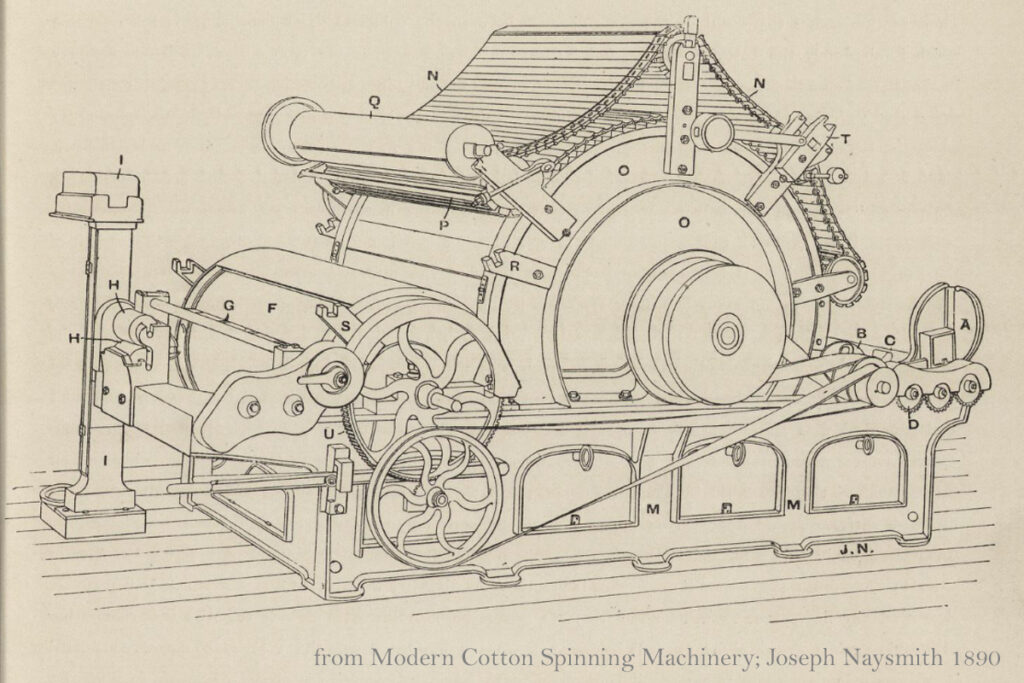
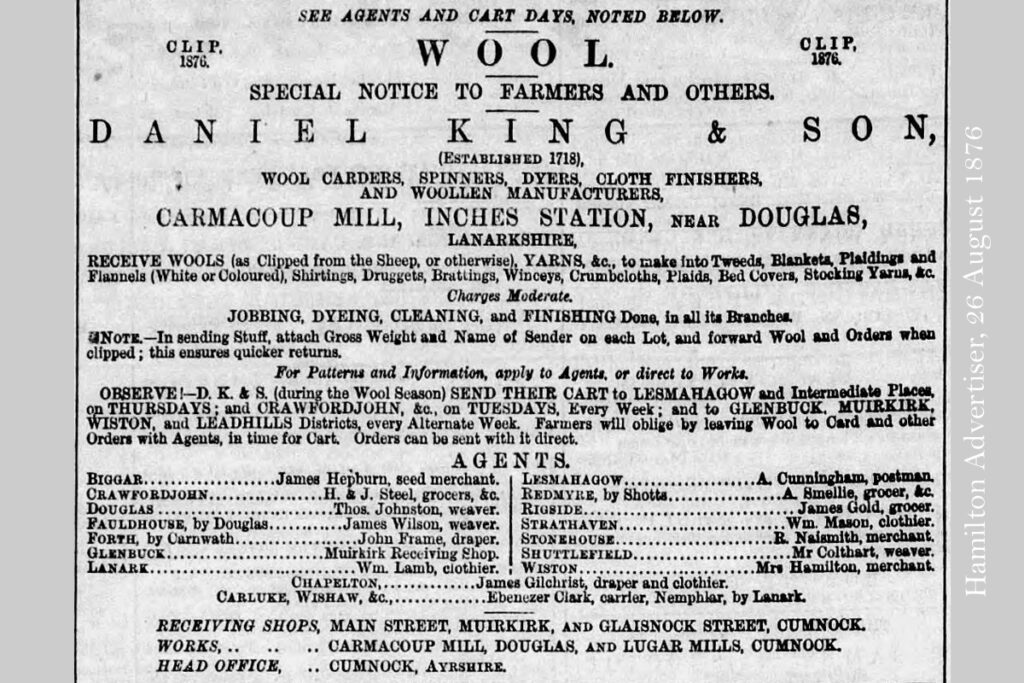
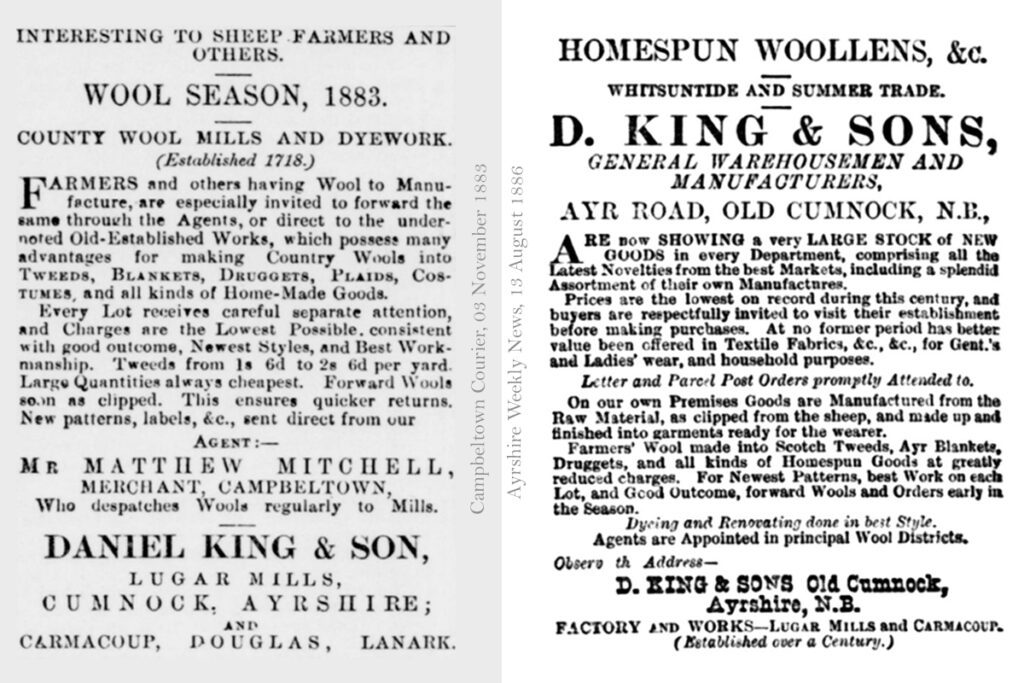
1.) A typical cotton carding machine. Equipment at Carmacoup would operate in a generally similar way. 2.) Advertisement showing the network of receiving agents appointed in many upland Clydesdale areas. 3.) Examples of advertisements placed in newspapers from Ayrshire and Kintyre.
Eighteen or so miles west of Carmacoup mill, in the Ayrshire town of Cumnock, the firm of Daniel King and Sons operated an extensive textile business based at the Lugar woollen mills. By the1860’s these works were equipped to card, spin and dye wool and weave all manner of woollen fabrics. The family firm dated back to 1718, and its core business was as a “country mill” in which raw fleece was collected from farmers and returned back to them as finished goods such as blankets and tweed cloth. Farming families often make their own clothing from such country tweeds. This service was paid for either in cash or in wool. During the annual “clip”, D. King & Co. sent vans to collect wool from local villages, and appointed a network of agents across the West of Scotland (from Stranraer to Campbelton) to which farmers delivered their raw fleeces.
The Lugar woollen mills were greatly extended during the 1860’s and 70’s, and a new office and warehouse established in Cumnock. In 1869 the company also took over the lease of Carmacoup carding mill; repairing and extending the building and fitting “machinery of the best description”. This bold expansion may have been influenced by the expected completion of the railway route from Lanark to Ayrshire by way of Muirkirk, which passed along the hillside overlooking Carmacoup mill. When the railway opened in 1873, carded wool could be loaded at the nearby Inches station and transported directly by rail to Cumnock for dyeing, spinning and weaving at the Lugar woollen mill. The new Carmacoup premises also gave the company opportunity to extend their network of agencies across the woollen districts of Clydesdale.
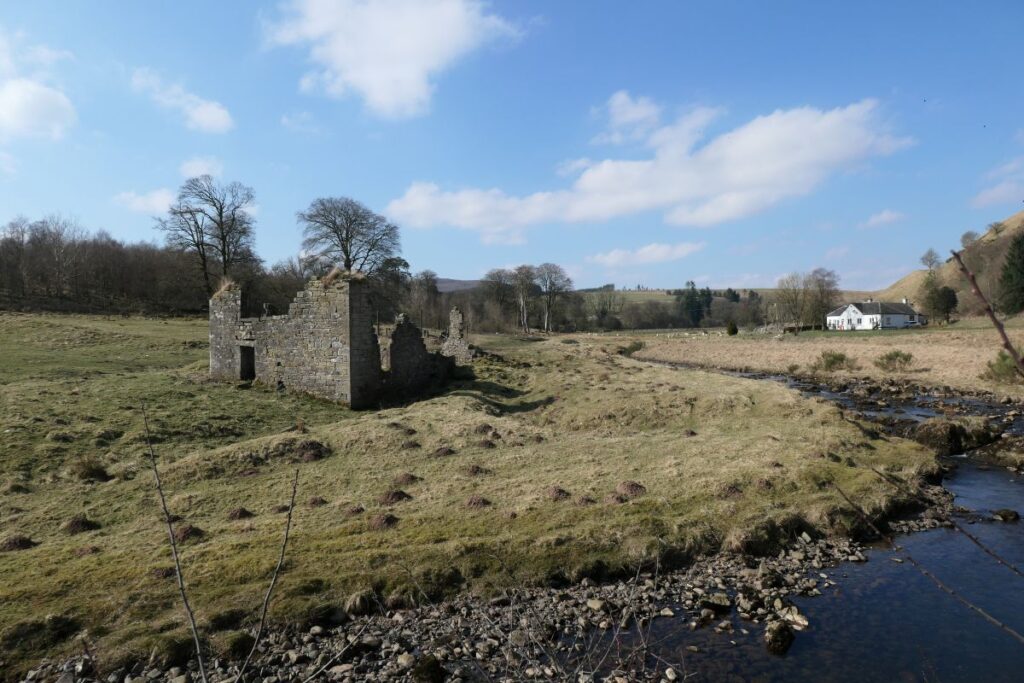
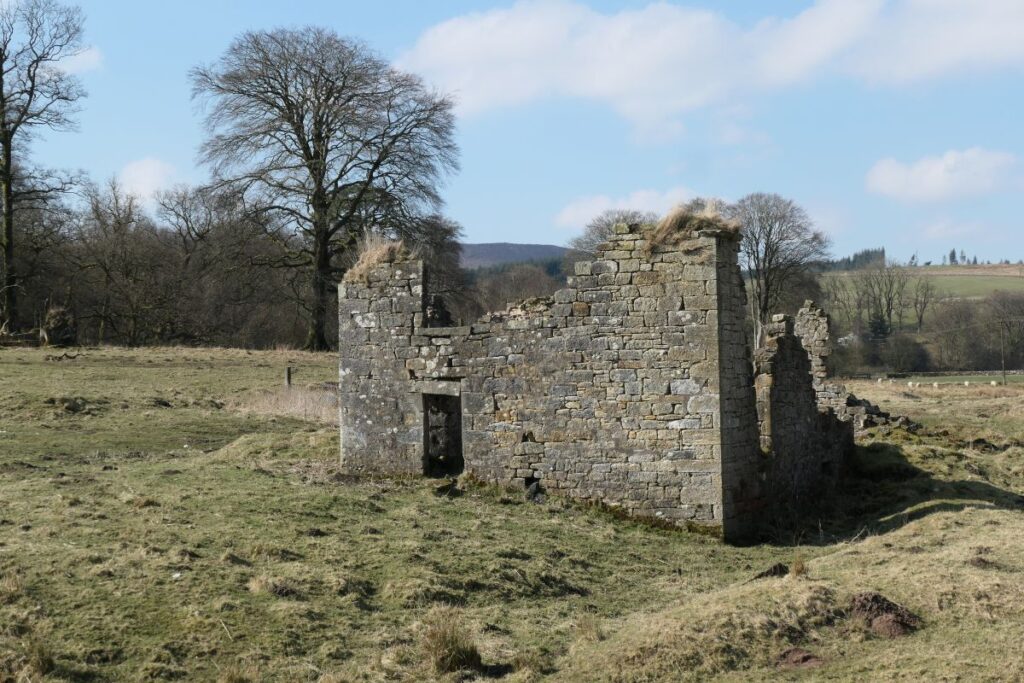
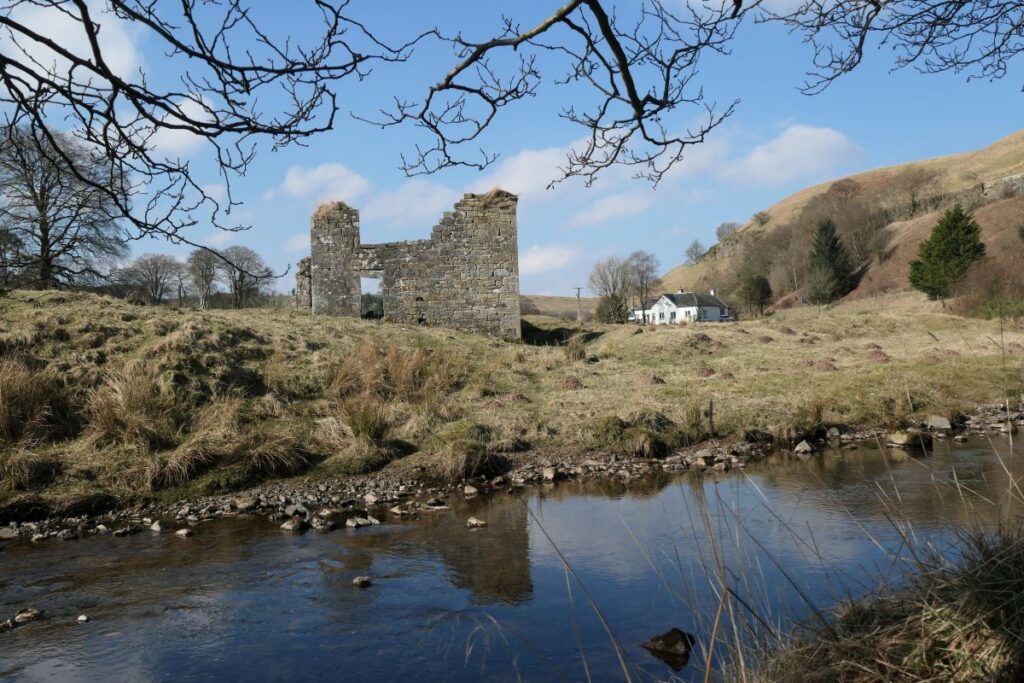
James King, who had been the driving force behind the company’s growth, died suddenly and prematurely in 1888, and the business passed to a younger brother whose interests laid mainly in developing a conventional wholesale business. The firm increasingly concentrated on fashionable clothing and the “latest novelties of the season”, rather than the old farmer’s country wool trade, and the traditional Ayrshire blankets, plaids and tweeds. The last advertisements to farmers appeared in the press during 1900, but little reference has been found to the subsequent fate of the company. The machinery and fittings of the Lugar mills were auctioned off in 1911 and it seems likely that the Carmacoup carding mill was stripped of its machinery at about that time, and allowed to fall derelict.
Unless otherwise stated, all text, images, and other media content are protected under copyright. If you wish to share any content featured on Clydesdale's Heritage, please get in touch to request permission.
